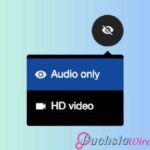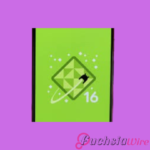One UI 8 vs. Android 16: Which Upgrade Wins?

One UI 8 vs. Android 16 has introduced its newest concepts for Android this year. Samsung’s One UI 8, developed using Android 16, and Google’s update to Android 16 with new Material 3 Expressive design, each introduces ways to style, manage, and personalize your device.
Both promise to deliver better and smarter features. They each use unique approaches when it comes to style and feel. That’s why we need to study the features and special details of every model to find out. Let's get started without further ado!
Android 16 with Material 3 Expressive
Material 3 Expressive is said to be a big visual update. It makes use of the current Material You style to deliver an animated, moveable, and “expressive” experience for everyone.
What makes Material 3 Expressive Unique
Thoughtful and precise animation adds weight to the user’s interaction by providing light haptic feedback. The animations of Elements respond to touch.
They shake a little when tapping on a Quick Settings tile and make a satisfying sound when you clear notifications. This goal is to ensure the interface appears lively and responds more readily.
It also adds different icon shapes and components. This shifts in the direction of rounded rectangles and a wider range of symbols. Now, users can adjust how large their tiles are to suit their personal needs.
The Wallpaper Effects feature includes new options. So wallpaper images can respond to weather conditions in your location by adding rain, snow, or sunlight.
Introducing Samsung’s Newest: One UI 8
One UI from Samsung has always been designed to allow users to customize things. It is to make the most of the features in their hardware.
One UI 8 which uses Android 16, emphasizes refinement and practical improvements after the big changes in One UI 7.
What One UI 8 Has to Offer:
With One UI 8, you can customize the screen split for multitasking like on some other Android skins. You can see a lot more in one app, without losing sight of the app you had open before.
A large part of the new features in One UI 8 are found in updated Samsung apps. The Reminder app gets a new design with better sorting. Quick Share is improved for simplified file sharing and My Files now comes with more effective download filtering.
The latest version of One UI includes support for Auracast. This makes it easier to stream sound to multiple devices and improvements to Samsung Health Together for enjoying exercise challenges.
What Is a Better Improvement?
User preference and the key features valued in a mobile OS largely determine which upgrade is better. Anyone who wants a fresh design and stable Android layout will probably be more impressed by Android 16 with Material 3 Expressive.
People who want an interface they recognize with helpful, useful features and many customization options will value One UI 8. What makes Samsung great is its year-round improvements and thoughtful changes to its hardware.
The Final Verdict
In short, choosing either approach will depend on users and their circumstances. Using Material 3 Expressive, Android 16 brings more life and a lively response to the user interface.
On the other hand, One UI 8 gives users a simple but useful upgrade. It concentrates on improving old traits and including the latest AI abilities inside Samsung's established technology.
Whether you care more about a vivid One UI 8 vs. Android 16 or lots of choice features, Android or iOS will have something for you.
More Reading: Samsung Starts One UI 8 Beta for Galaxy S25 Series


